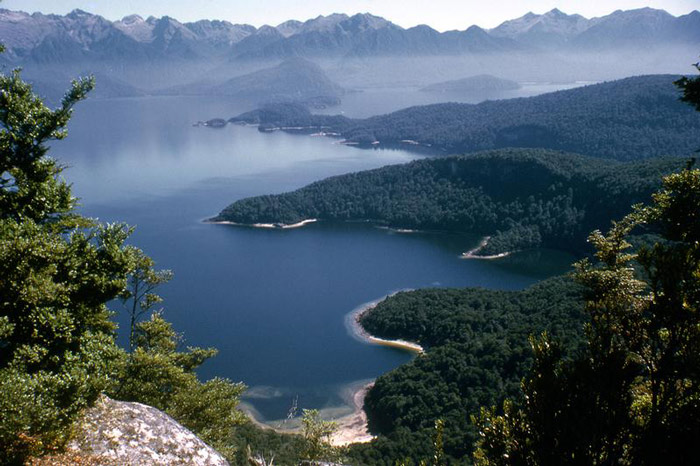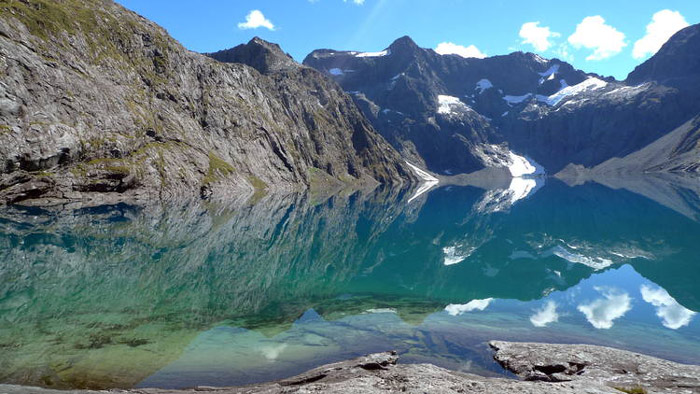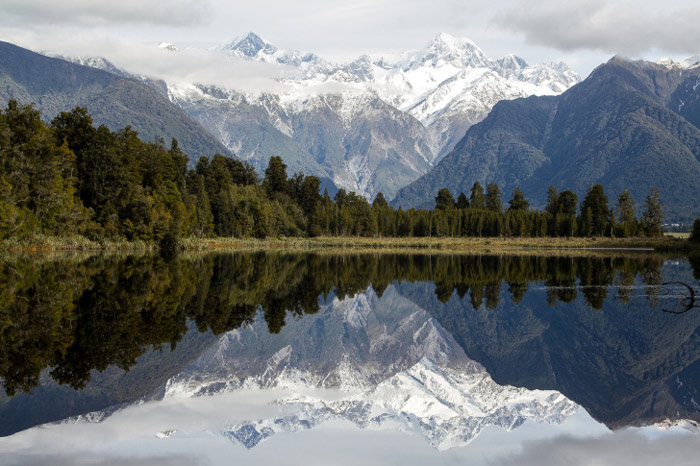Te Wahipounamu, southwestern New Zealand national parks
Unesco's Scientific, Educational and Cultural Organization recognized Te Wahipounamu, the southwestern New Zealand national park as the World Natural Heritage in 1990.
Te Wahipounamu is a park (national park) located in the southwestern part of New Zealand. With an area of up to 2.6 million hectares, extending from Tasman Sea islands deep into New Zealand to 90 km and extending to 450 km of coastline.

It can be said that this is a huge national park, Te Wahipounamu is divided into four smaller national parks including: Fiodland National Park; Mount Aspiring National Park; Aoraki National Park; Westland Tai Poutini National Park.
The terrain here is mostly majestic mountains, with high cliffs on the coast, waterfalls, lakes, snow mountains and glaciers. There are also 15 fjords, most famous is Milford Sound Bay . In addition, temperate forests and a long-lasting sedimentary rock system also provide Te Wahipounamu National Park with a spectacular and breathtaking natural landscape.
Most of the area is covered by pine and oak forests, many of which are hundreds of years old. National park animals also recorded many rare species, especially the Takahe and Kea birds .



Fiodland National Park
The garden is located in the western corner of the large national park. Fiodland National Park is the largest national park among 14 national parks in New Zealand with an area of 12,500 km2. Millions of years ago, the area was very cold with glaciers that deep into the mainland forming fjords. Up to now those fjords still exist, in which there is the world famous Milford Sound Bay . Then there are other notable fjords like Doubtful Sound and Dusky Sound. In the national park, there are two uninhabited islands, Secretaru Island and Resolution. Some large lakes also occupy much of the garden, especially Lake Te Anau; Lake Manouri; Lake Monowai; Lake Poteriteri. Sutherland Falls, located in a 581-meter-high national park, is one of the tallest waterfalls in the world. Wildlife in this area has dolphins, seals, rabbits, deer . and some birds.

Mount Aspiring National Park
The national park is located in the south of Te Wahipounamu large national park. The garden was established in 1964 with an area of 3,555 km2. The garden is located directly to the west of Lake Wanaka - a very touristy area and mountaineers. The mountain named after the park is the highest mountain - Aspiring , the mountain is 3,033 meters above sea level. The next is Mount Pollux with a height of 2,542 meters; Mount Brewster is 5,519 meters high.

Aoraki National Park
The garden is named after the highest mountain in the garden boundary, Mount Aoraki with a height of 3,724 meters above sea level, this is also the highest mountain in New Zealand. The garden was established in 1953 with the aim of protecting the vegetation and landscape here. Currently, Aoraki National Park is one of the places that attracts many tourists with many interesting activities such as climbing, hunting, skiing, hiking. The total area of the garden is 707 km2 of which 40% is glacier. Aoraki National Park is also home to 400 species of plants creating an extremely diverse and rich vegetation. The garden is also home to about 40 animal species including the genus, including the particularly rare Parrot Kea; The species of the Hornbill - an endangered monkey species. Invertebrate animals in the garden up to several hundred species of butterflies alone have up to 223 species.



In the national park, the system of rivers, lakes and mountains is intertwined, creating majestic and rare landscapes.
Westland Tai Poutini National Park.
The garden is located on the west coast of the large national park, founded in 1960. The park covers an area of 1,175 km2 extending from the highest peak of the Alps to the pristine coastline, adjacent to Aoraki National Park.

In the garden, a network of glaciers and lakes is intertwined.Franz Josef and Fox Glaciers are two popular tourist attractions located in Westland Tai Poutini National Park. It is also allowed to organize hunting activities such as hunting deer, chamois, mountain goats and exploiting services using helicopters to access dangerous mountainous areas. Hiking here also attracts a lot of people involved by the majestic, spectacular landscape of the mountains combined with the hot water.
The national park is also a place to visit to attract a lot of tourists, besides athletes from all over the world also come here to participate in climbing, fishing, and exploring activities. .
- Tongariro National Park
- Discover the 10 most beautiful national parks in America
- A close-up of the 'extremely toxic' fishes off New Zealand
- Bwindi National Park is banned
- The majestic aura is breathtakingly beautiful through a timelapse feat
- Inky octopus 'defected' from New Zealand aquarium
- Discovered three new species in New Zealand cave
- Protected Areas and National Parks in Canada and the United States
- 10 pictures are quite uneven but beautiful to hold their breath
- If New Zealand is available, where is 'Old Zealand'?
- 12 unique natural heritage of the world
- The wildly abandoned parks in the world
 Suzhou classic bonsai garden - China
Suzhou classic bonsai garden - China Chau Nguyen Dynasty
Chau Nguyen Dynasty Thai Son Mountain - World Wonder
Thai Son Mountain - World Wonder Ancient villages of Shirakawa-go and Gokayama
Ancient villages of Shirakawa-go and Gokayama